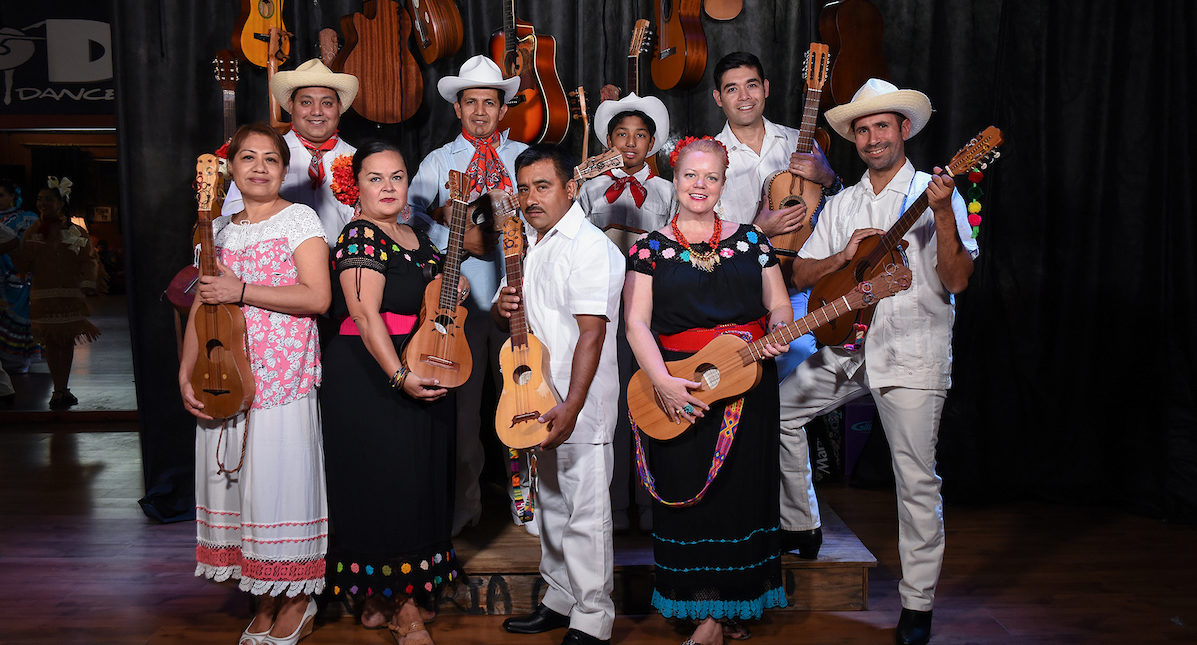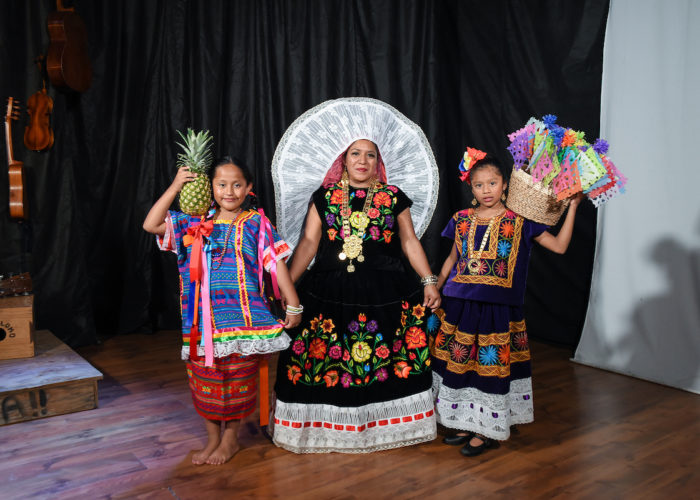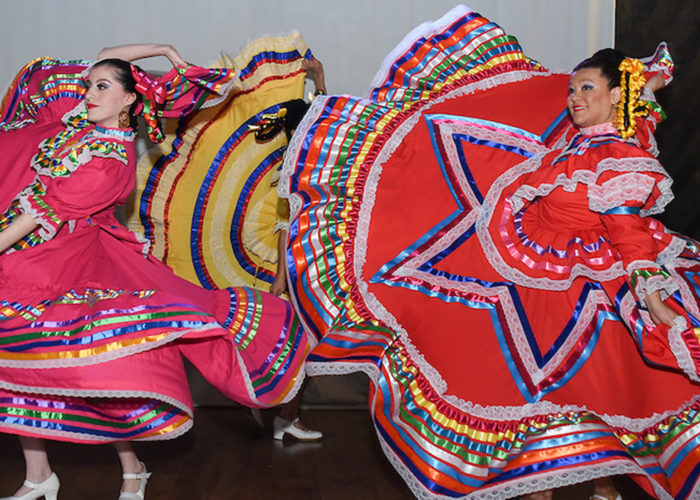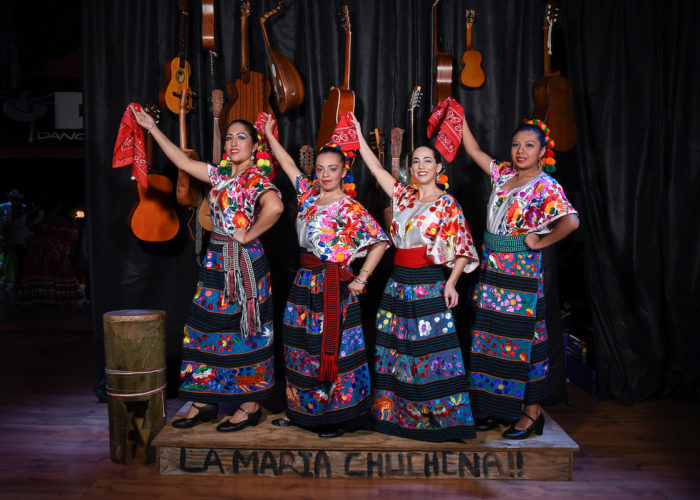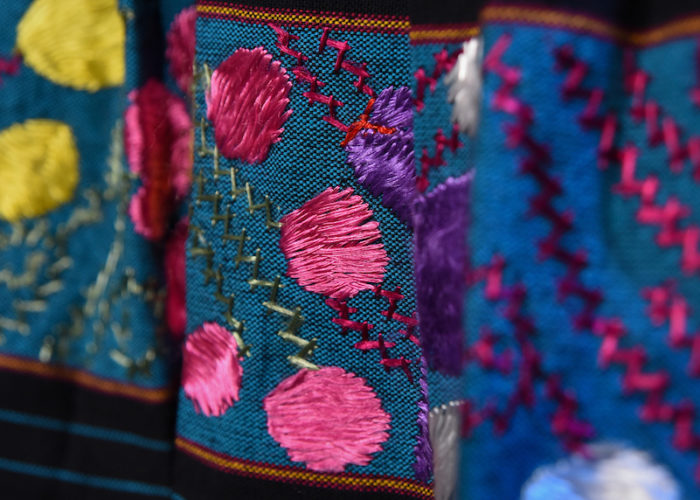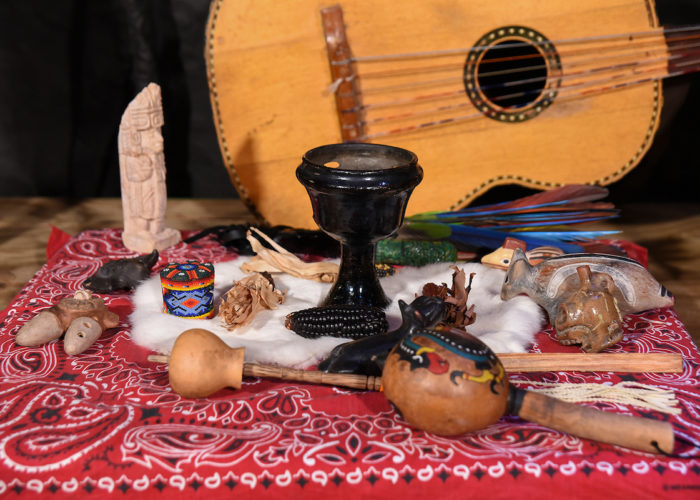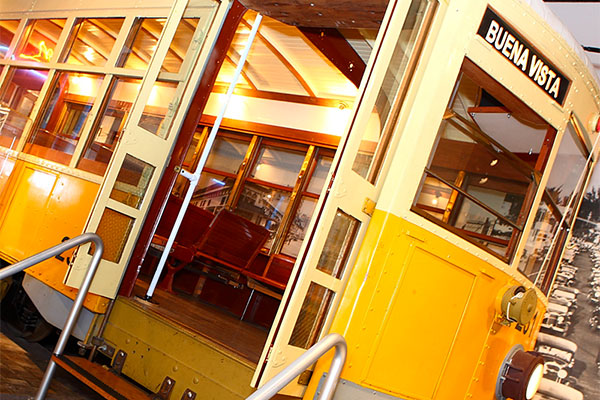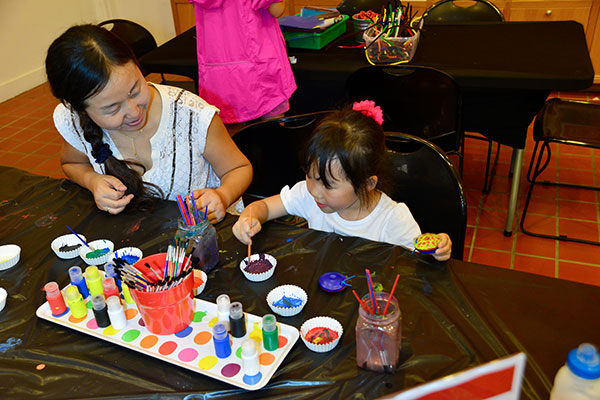Born in Veracruz, Mexico, Alfredo Martinez is a dancer and musician with a passion for showcasing Mexico’s lesser known but vibrant traditional art forms. Before settling in Miami, Alfredo graced the stage with the Mexican Folkloric Ballet of New York and the Mexico Beyond Mariachi project. An expert in the music styles of son jarocho and son tixtleco, as well as Pre-Columbian ritual traditions, he now serves as the founder and director of Ameyal Mexican Cultural Organization in Miami. Through inventive and immersive presentations, the organization cultivates an appreciation for Mexican traditional culture and brings their heritage to life.
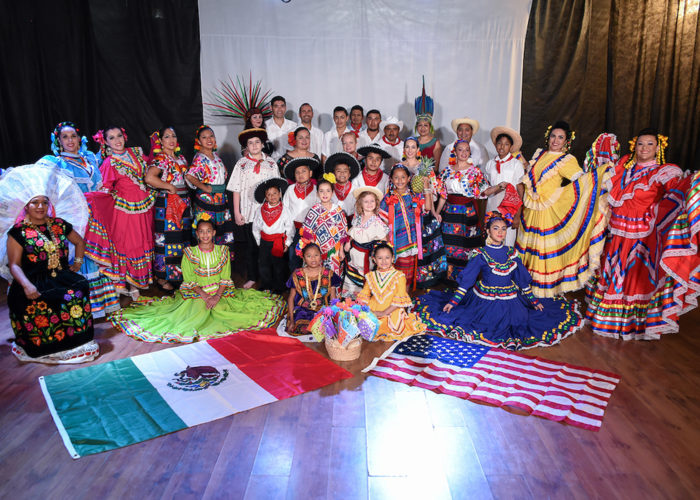
More about Alfredo and Ameyal Mexican Cultural Organization
The following is from an interview HistoryMiami Museum conducted with Alfredo Martinez in 2017.
What is your name and where are you from?
My name is Alfredo Martinez and I am from Veracruz, Mexico.
When and why did you move to Miami?
After living in New York for 12 years, my wife and I decided to move to Miami hoping to find a place most like Veracruz, the place where we were born.
What music and dance traditions do you specialize in?
I really don’t like to use the word “specialize,” but I would say I focus on dances performed at communal parties called fandango, ritual dances called concheros, and folk dances.
Both the ritual dances and the tradition of the fandango, technically speaking, have very little specialization. It must be understood that the wealth and importance of these dances lie in their communal character. Experience isn’t required to participate in the celebration of these two traditions. Performance is a process that creates a link between tradition and our being, and it ensures continuity and keeps the tradition alive, rich, and fresh. The third one, the folk dance, has to do more with the diffusion of our culture rather than the tradition. Folkloric ballet should not be considered as a form of tradition itself, as it is actually a theatrical and artistic representation using music and traditional dance as its theme.
In which regions of Mexico are these traditions practiced? What is their history?
The origin of the concheros dances, which I prefer to call ritual dances, dates back to Pre-Columbian times. However, its present form is the result of syncretism between the Christian tradition and the worldview of our native ancestors from Mexico. Although today we can find groups of dancers throughout the Mexican territory and in several places abroad, the epicenter of the dances is located in the regions of the Mexican central plateau, Queretaro, Guanajuato, State of Mexico, Morelos, Puebla, and Tlaxcala. The importance of this ritual dance, its practice, and its conservation, is in the concepts, rituals, and ceremonial forms that have preserved the philosophy and mysticism of the early settlers of America.
On the other hand, the son jarocho is from the basin of the Papaloapan River. It is located in the south of the State of Veracruz, better known as Sotavento (meaning “a place where the wind hits you”), which is steeped in the jungle with mangroves, mountains, creeks, and springs everywhere. This is fertile land that germinated one of the strongest and most representative of Mexico’s traditions.
As a cultural diffusion organization, the practice of son jarocho and the sones de Artesa and Tixtla, allows Ameyal to highlight the African influence in these dance forms for audiences. Its beauty and magic are more than evident in the rhythms and instrumentation. The contribution to Mexican culture, music, dance, and traditions of the first African slaves who came to the coast of Mexico (mainly Veracruz, Guerrero, and Oaxaca) has not been fully recognized or appreciated in all its magnitude and frankly, in many cases ignored.
How did you learn these traditions? Who taught you?
From my point of view, we don’t learn these traditions. You eat, breathe, and absorb them from the environment. There is a very common phrase in the circles of dancers when a novice tends to ask a lot of questions. Grandparents or older people of the community say, “Let the dance talk itself.” This means let it occur alone. You don’t have to force it. If you’re not patient or cannot listen to it, it won’t manifest to you, so maybe this isn’t for you. But if you listen to it and it manifests to you, then “ask less and listen more.” Now that I’ve explained the above, I can respond that I learned the dance tradition in the circles of dancers. Who was my teacher? The dance itself.
A more conventional answer would have to be names and places, so I will also give them: I learned the tradition of conchero in NYC under the dancers Edward Jaramillo, Gustavo Coacoatl, Chief Antonia Guerrero and Guadalupe Becerril. But it was Cecilia Ortega and her spouse, Francisco Marín who showed me a new way of life that endorses the philosophical principles of our ancestors. Cecilia and Francisco taught me that dance is a way of life, they took me to the very heart of their family of dancers.
Son jarocho is more mundane and festive, I played my first son in NYC under the guidance of maestro Gabriel Guzmán. But the real immersion into the traditional music of Mexico was by the hand of my friend Alda Reuter, who gave a twist to my approach to music and the traditional dance of Mexico. It was getting to know her friends and family that led me to understand, value, and appreciate the beauty the tradition brings to our lives. This immersion lead me to contact Mario Guillermo Bernal Maza, ethnomusicologist and author of several books about traditional music of Mexico, who agreed to work with us for pedagogical and methodological guidance on cultural diffusion. Mario is the still giving counsel on the Ameyal project.
For the folkloric ballet, I worked under the teacher Juventina Duran, where I had the opportunity to experience this particular form of “tradition.” But Yloy Ybarra, my teacher, mentor, and friend is my main source of inspiration for staged productions. You can feel his influence in my choreographic work. No doubt I owe him the passion for stages beyond the cultural and geographical context.
Tell me the story of how the Ameyal Mexican Cultural Organization was founded.
By necessity. By loneliness. When I told a friend about the project, she answered me with discouragement: “Alfredo, you are alone.” She was right, we were alone, and if we wanted to continue with our practices, we needed to found an organization that specifically cultivated these traditions. None of the dancers’ grandparents traveled to Miami. No group brought the fandango tradition to Miami. This made us think that we could greatly enrich the cultural atmosphere of this city with our organization.
Both the fandango tradition and the ritual dance are communal practices; we only reach their true dimension in the context of group. There was no dancing circle in Miami, so we had to establish one. Miami didn’t have a Jaranero group, so we had to train them to be able to continue the tradition.
On the other hand, Miami has environmental characteristics suitable to practice son jarocho and it’s a perfect place for the development of fandango. Sons about things like the iguana, the duck, the rooster, the waves of the sea, the coconut, the sugarcane, make sense in Miami’s nature. Many times I jokes with my friends in the North where there is a fandango tradition already rooted that when they play the Son of the Iguana in winter or summer there are no iguanas!! In Miami, by contrary, they are a part of our daily lives. In regards to the ethnographic and musical aspects, in son jarocho you can feel the strong influence of Afro-Caribbean culture. Miami is fertile ground for the son jarocho, we only had to bring the seed.
What is the mission of Ameyal?
- To create and foster traditions or cultural manifestations that characterize the region of Mexico, and to germinate, nuture, and finally give fruit to ensure their preservation and continuity
- The formation of new popular artists, in order to give continuity to our cultural heritage, and at the same time provide the community with new possibilities of expression and personal growth
- To preserve and share what Mexican culture has to offer to the community of South Florida
- To provide a form of community and family interaction in an inclusive, positive. and educational way
What does the name “Ameyal” mean?
The word Ameyal means “spring water” in the Nahuatl language, and this is what we intend to be: a spring that flows from our roots and our traditions from the depths of our hearts. A spring respects the terrain where it runs, molding its current to the topography. In a similar way, our organization respects people’s different characteristics and backgrounds. At the same time, we are fertilizing the ground where our culture, our seed, will germinate in a number of forms and artistic expressions.
Spring water defines us as an organization and the things that we do every day. Think about what a spring is able to accomplish in its journey to the sea as it is reunited with its essence. Ameyal believes that the culture, traditions, and our roots, regardless of our place of origin, belong to the vast ocean that is the human spirit. When we contemplate the majesty of the ocean, there is no reason to make distinctions of the single drops that create it.
What do you enjoy most about teaching music and dance through Ameyal?
No doubt, I enjoy the challenge that it presents. In Ameyal, our approach to the diffusion, teaching, and learning of traditions is different in many ways in comparison to the approach to music in dance schools. Creating conditions to germinate seeds in difficult conditions is a big challenge. When the seed has germinated, to take care of it, cultivate it, and make it flourish requires a lot of imagination. The challenge to work without resources made us creative: modifying or building our own instruments, practicing in apartments because we don’t have a place or money to rent a space, sometimes practicing in parks or back yards where the mosquitoes have a party on our bodies. But still people come to practices and enjoy it. We still grow and grow. It’s priceless to see how practicing what we love has a positive influence on our kids and in our families. We want to believe that in some way we are doing something to create a strong and healthy community.
What do you enjoy most about performing these traditions?
It gives us the opportunity to interact with people and listen to what this music, dance or ritual makes them feel or think and when our audience can identify themselves, in the music or dance or ritual that we are performing. To declare through our work that no culture is small or big, one better than other, good or bad. That people are like drops of water of the same ocean that is the human experience.



